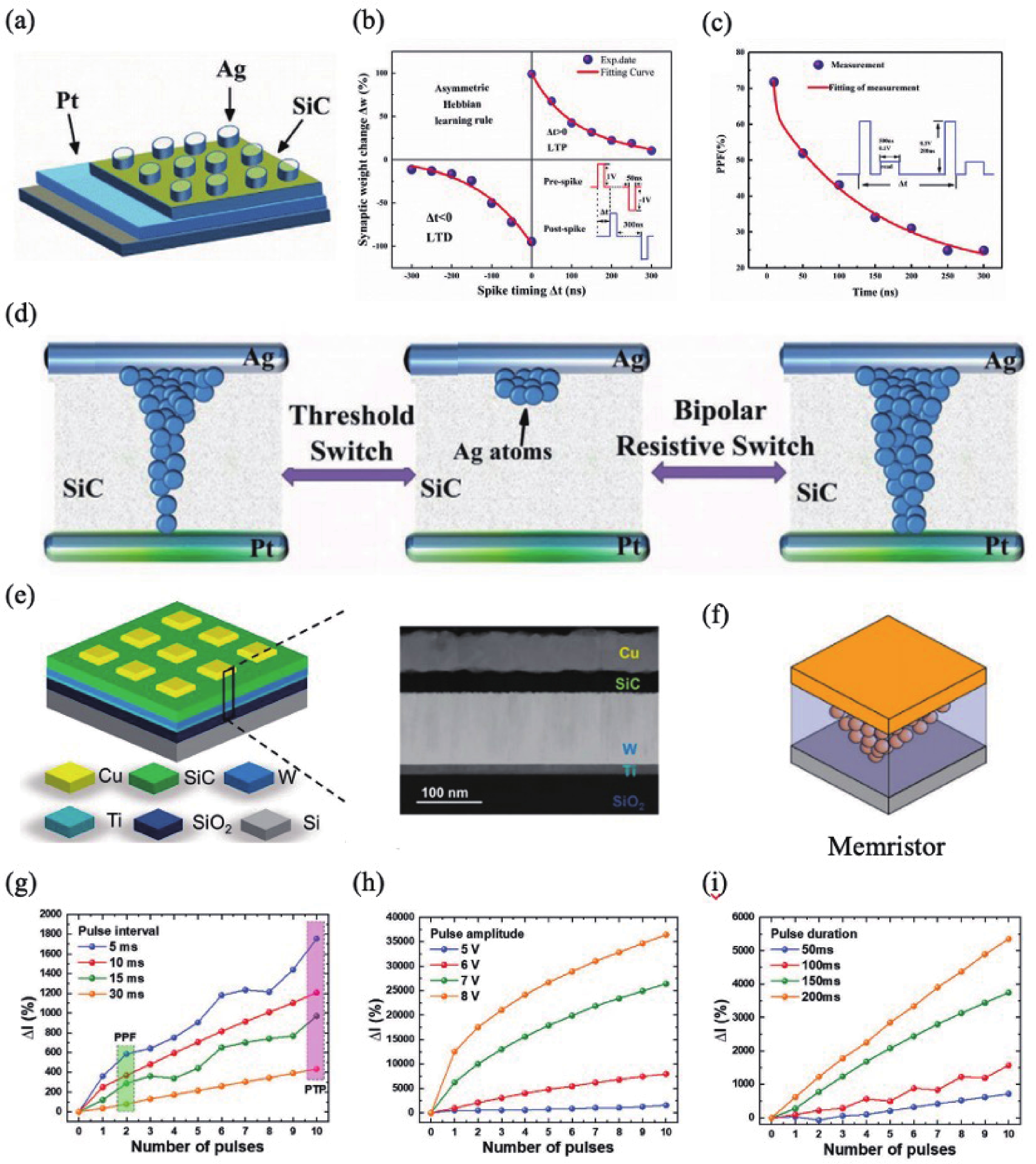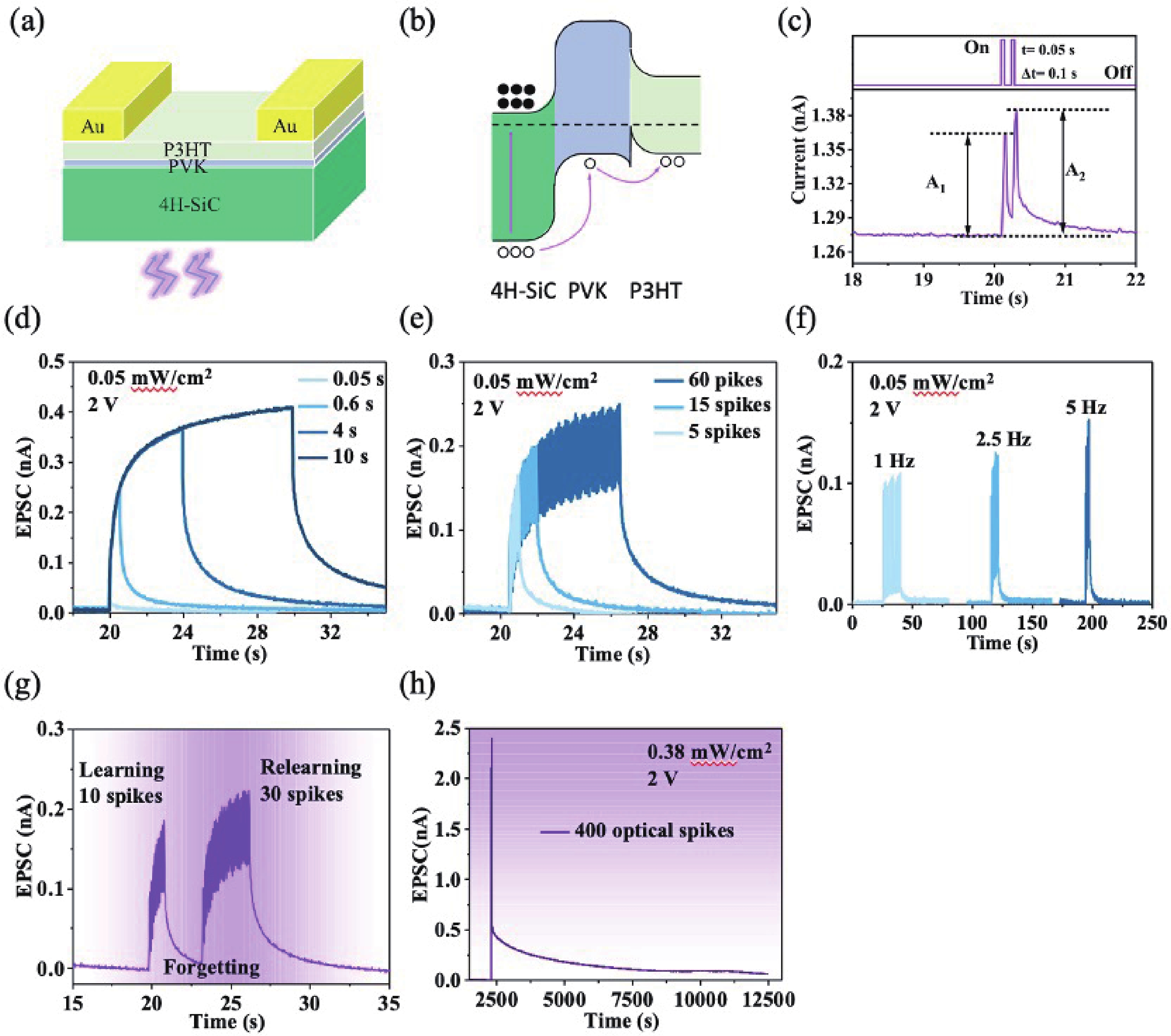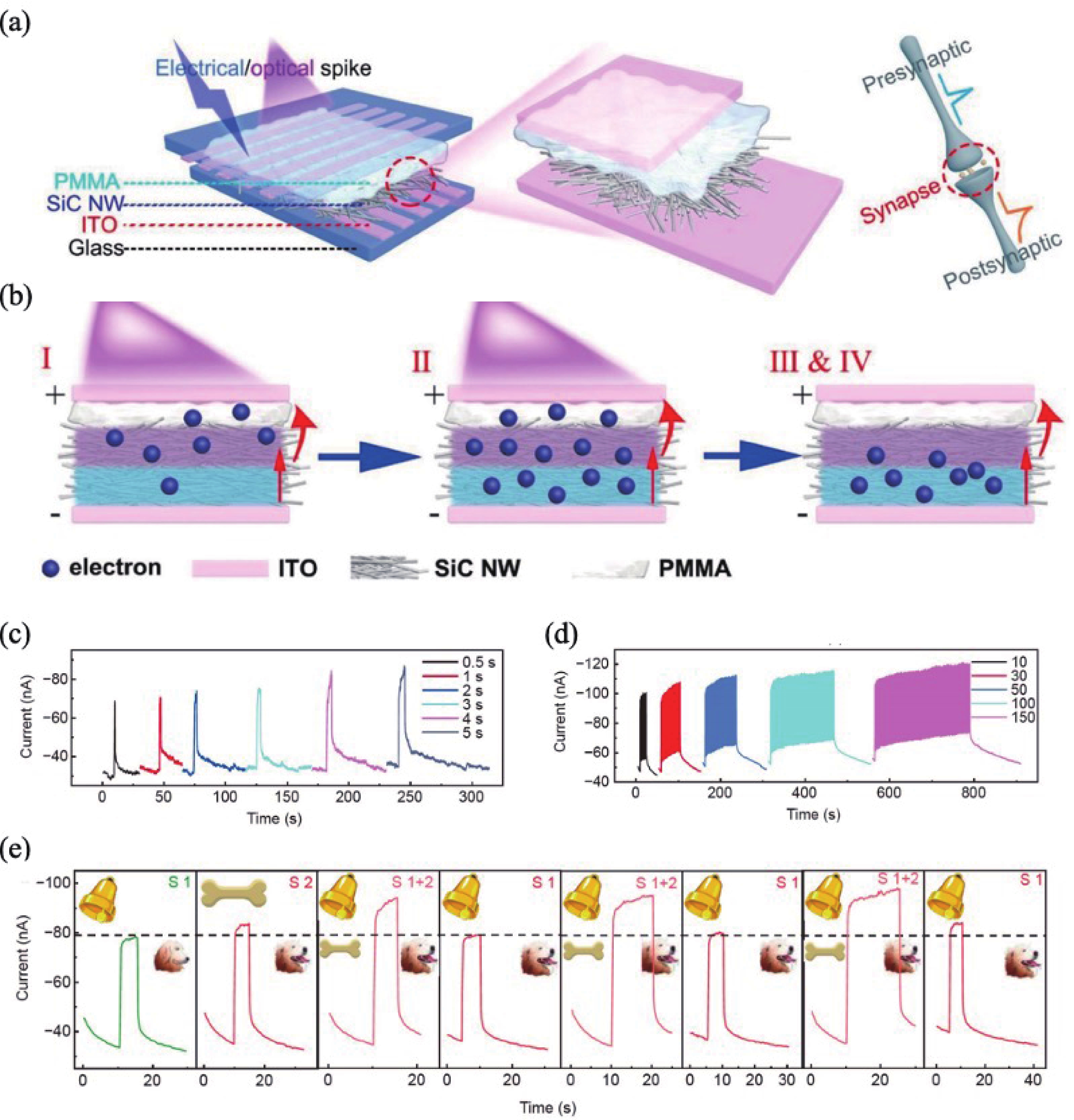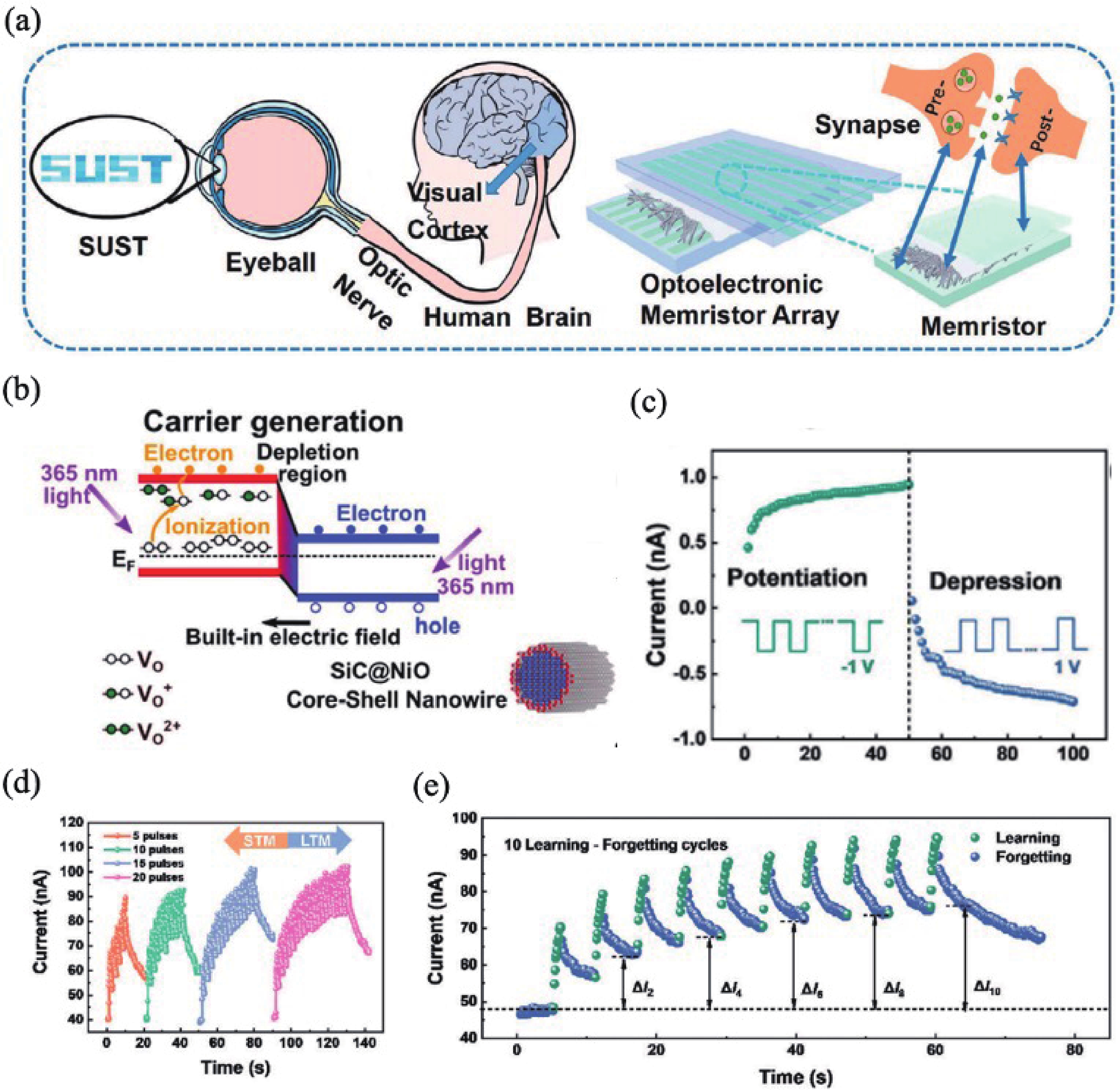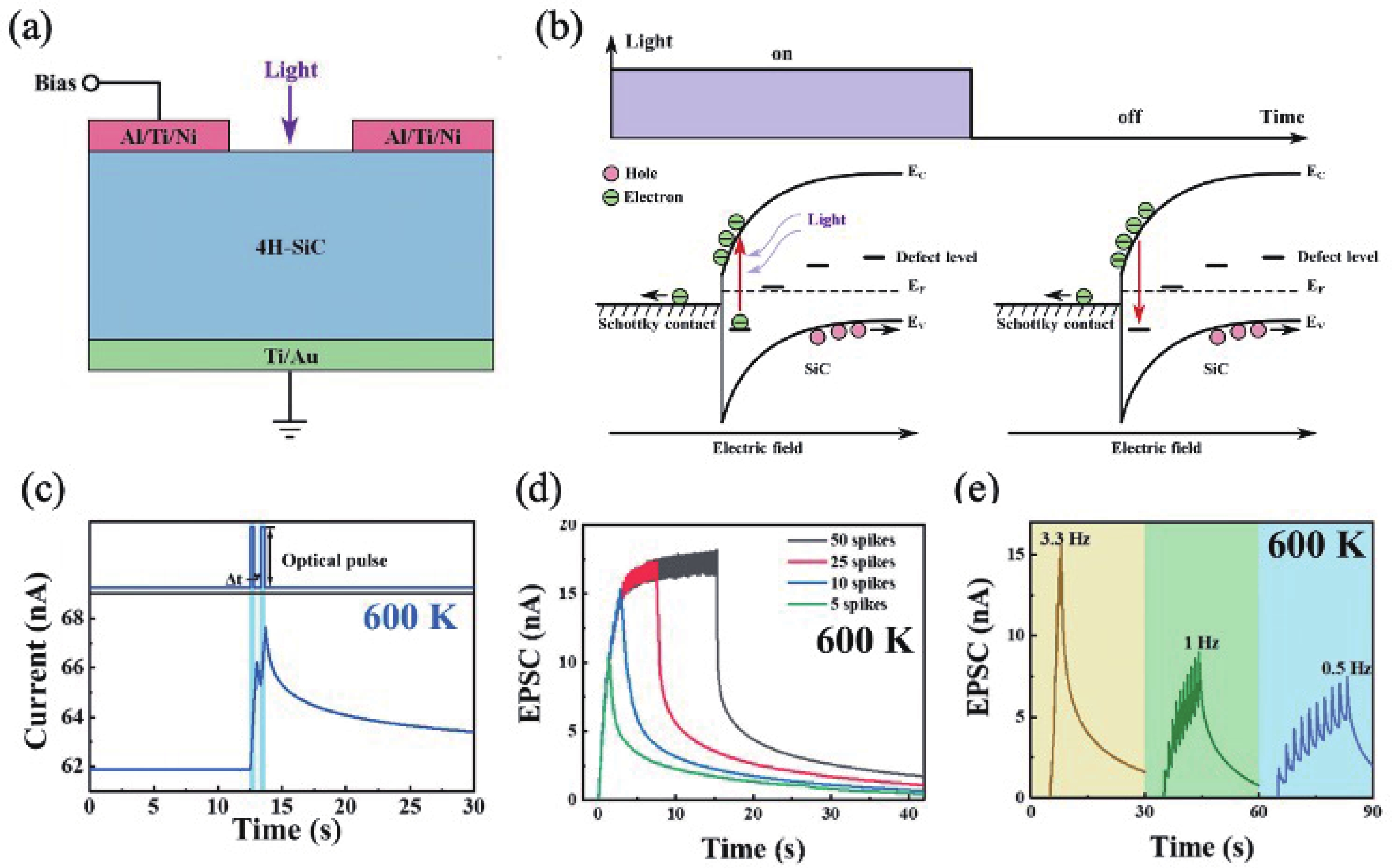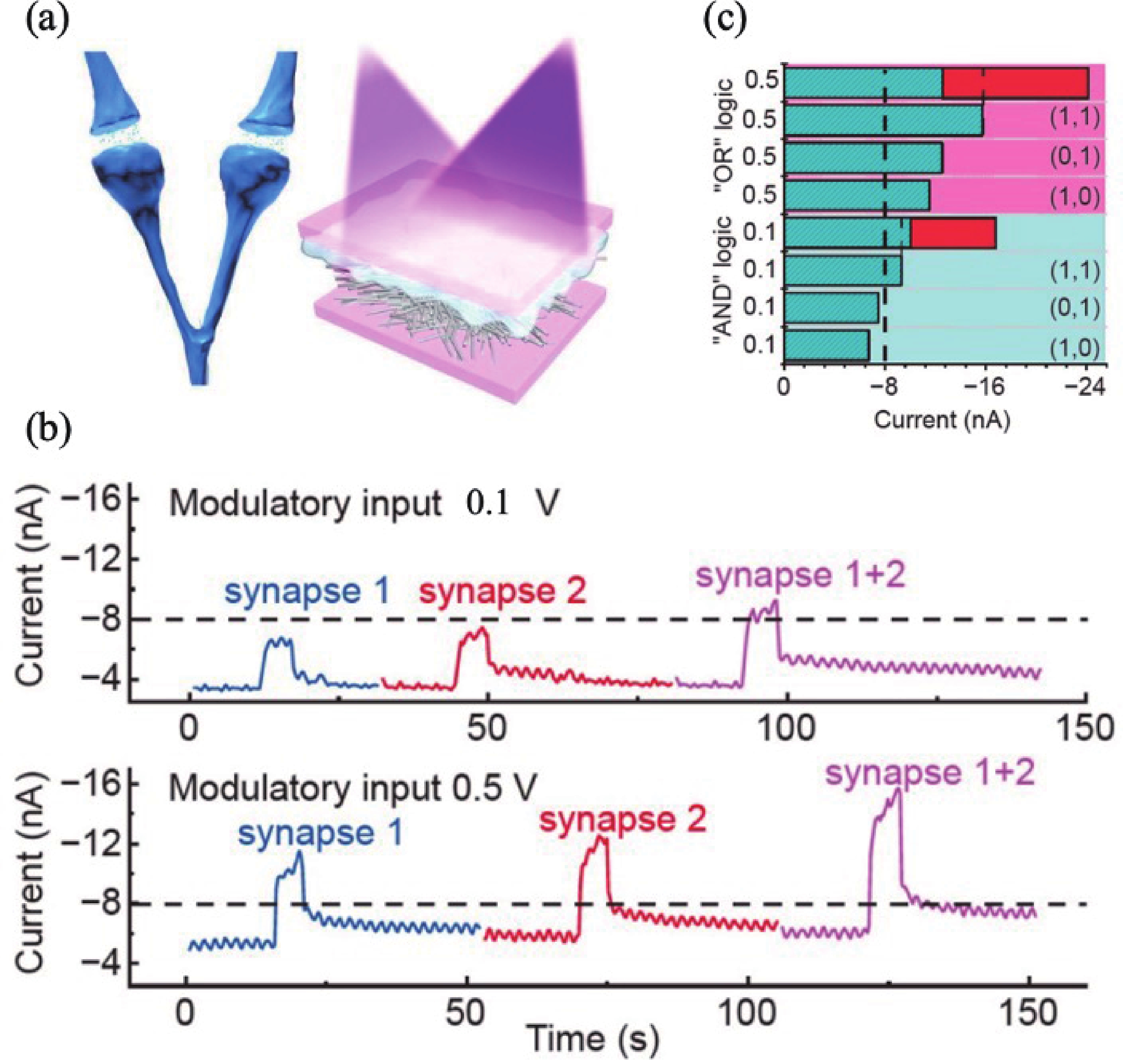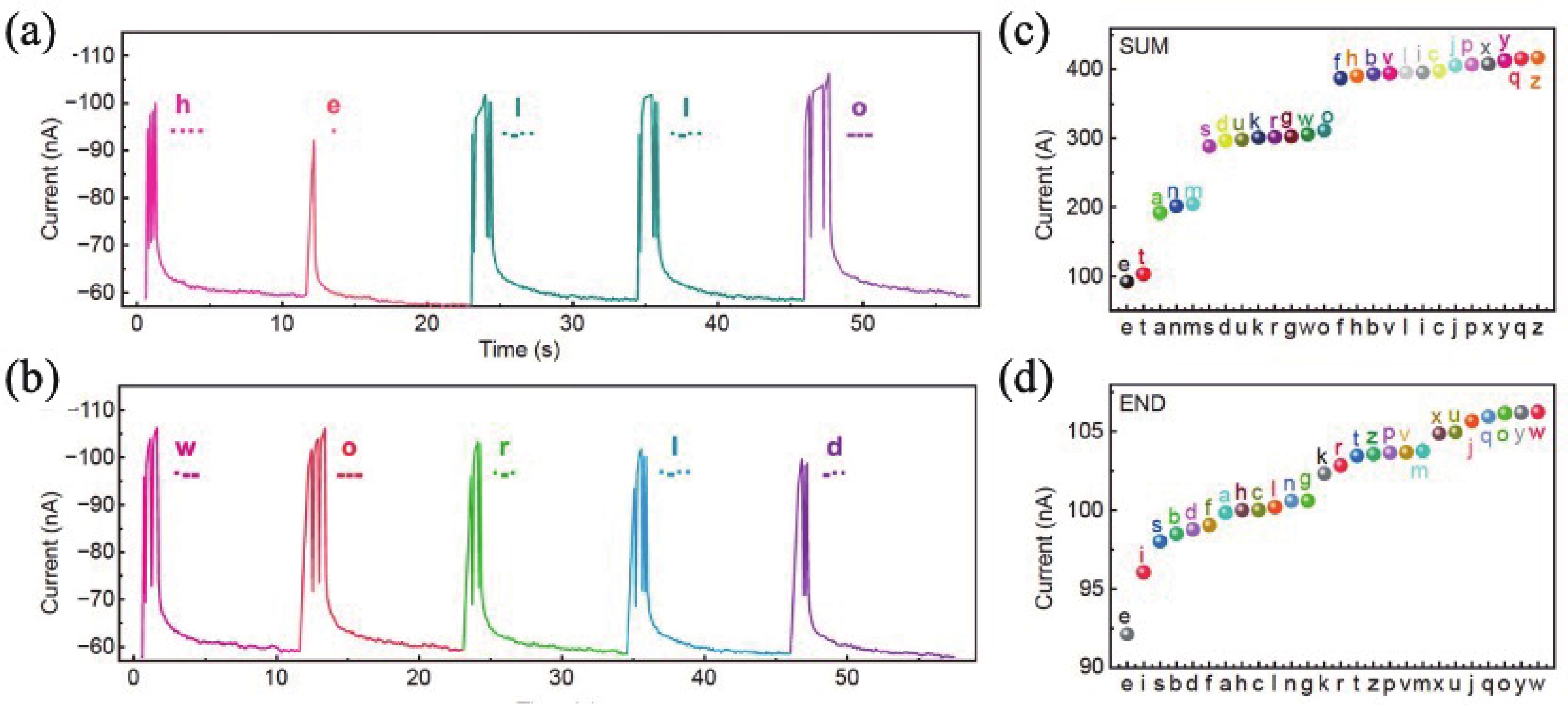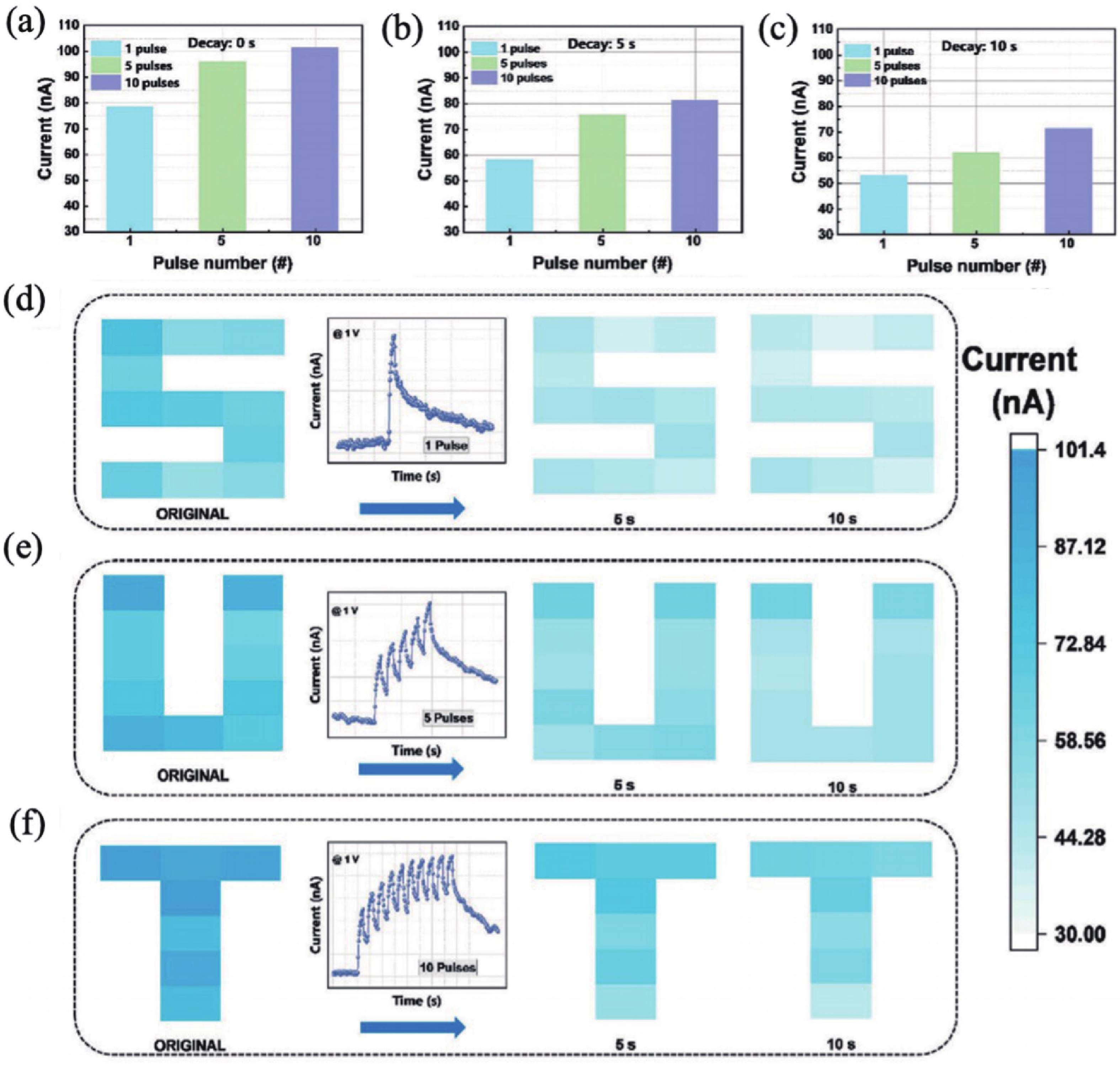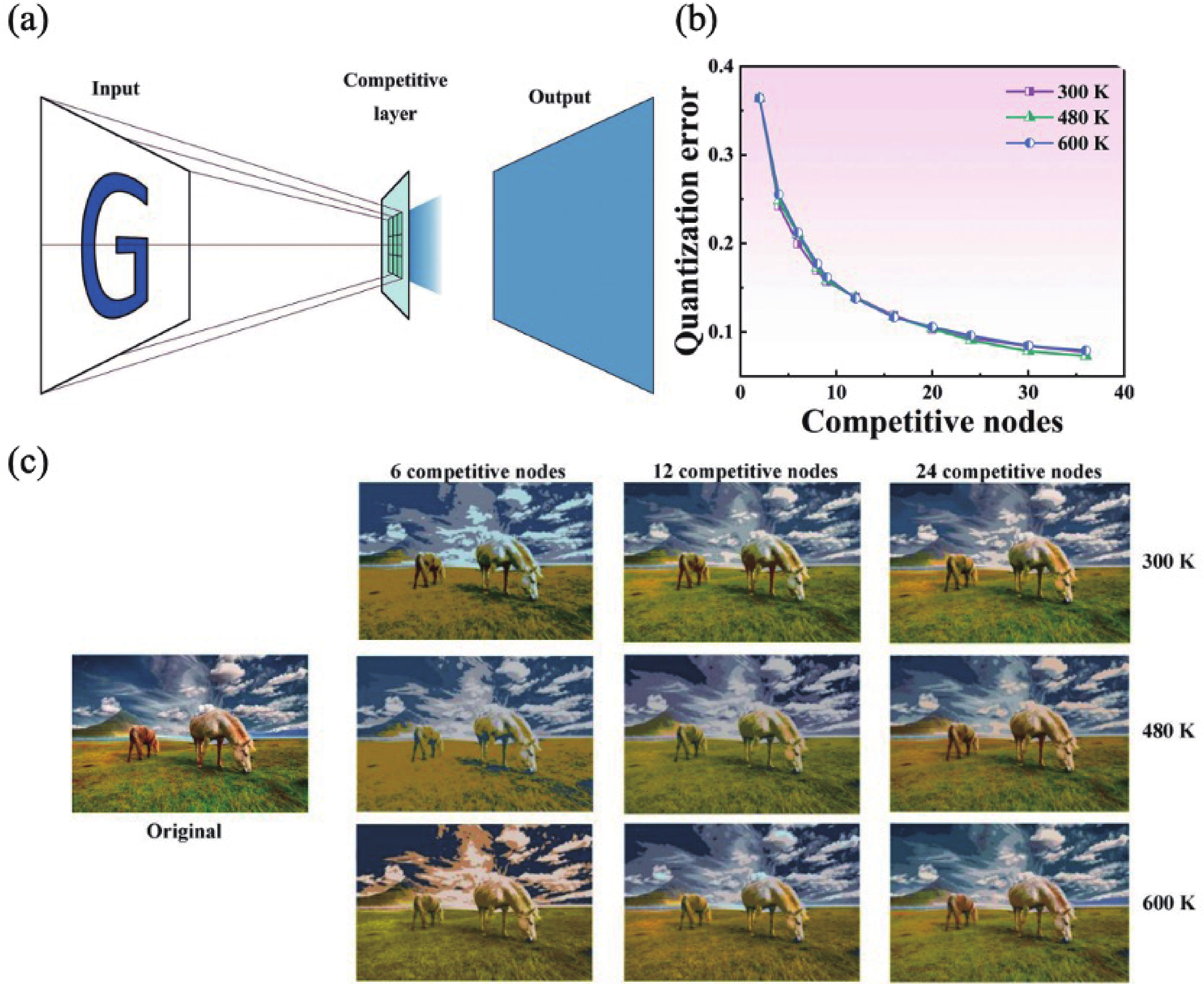| Citation: |
Boyu Ye, Xiao Liu, Chao Wu, Wensheng Yan, Xiaodong Pi. Synaptic devices based on silicon carbide for neuromorphic computing[J]. Journal of Semiconductors, 2025, 46(2): 021403. doi: 10.1088/1674-4926/24100020
****
B Y Ye, X Liu, C Wu, W S Yan, and X D Pi, Synaptic devices based on silicon carbide for neuromorphic computing[J]. J. Semicond., 2025, 46(2), 021403 doi: 10.1088/1674-4926/24100020
|
Synaptic devices based on silicon carbide for neuromorphic computing
DOI: 10.1088/1674-4926/24100020
CSTR: 32376.14.1674-4926.24100020
More Information-
Abstract
To address the increasing demand for massive data storage and processing, brain-inspired neuromorphic computing systems based on artificial synaptic devices have been actively developed in recent years. Among the various materials investigated for the fabrication of synaptic devices, silicon carbide (SiC) has emerged as a preferred choices due to its high electron mobility, superior thermal conductivity, and excellent thermal stability, which exhibits promising potential for neuromorphic applications in harsh environments. In this review, the recent progress in SiC-based synaptic devices is summarized. Firstly, an in-depth discussion is conducted regarding the categories, working mechanisms, and structural designs of these devices. Subsequently, several application scenarios for SiC-based synaptic devices are presented. Finally, a few perspectives and directions for their future development are outlined. -
References
[1] Zhou F C, Chai Y. Near-sensor and in-sensor computing. Nat Electron, 2020, 3(11), 664 doi: 10.1038/s41928-020-00501-9[2] Li Y, Shen G Z. Advances in optoelectronic artificial synapses. Cell Rep Phys Sci, 2022, 3(9), 101037 doi: 10.1016/j.xcrp.2022.101037[3] Huang P Y, Jiang B Y, Chen H J, et al. Neuro-inspired optical sensor array for high-accuracy static image recognition and dynamic trace extraction. Nat Commun, 2023, 14(1), 6736 doi: 10.1038/s41467-023-42488-9[4] Li G, Xie D G, Zhong H, et al. Photo-induced non-volatile VO2 phase transition for neuromorphic ultraviolet sensors. Nat Commun, 2022, 13(1), 1729 doi: 10.1038/s41467-022-29456-5[5] Guo T, Li S S, Norman Zhou, et al. Interspecies-chimera machine vision with polarimetry for real-time navigation and anti-glare pattern recognition. Nat Commun, 2024, 15(1), 6731 doi: 10.1038/s41467-024-51178-z[6] Sui N Z, Ji Y X, Li M, et al. Photoprogrammed multifunctional optoelectronic synaptic transistor arrays based on photosensitive polymer-sorted semiconducting single-walled carbon nanotubes for image recognition. Adv Sci, 2024, 11(29), e2401794 doi: 10.1002/advs.202401794[7] Jiang X Y, Ye M R, Li Y H, et al. Multiframe-integrated, in-sensor computing using persistent photoconductivity. J Semicond, 2024, 45(9), 092401 doi: 10.1088/1674-4926/24040002[8] Liu X, Huang S J, Wang K, et al. An array of light-stimulated two-terminal synaptic devices with the modulation of electric polarity. Adv Funct Mater, 2023, 33(9), 2211394 doi: 10.1002/adfm.202211394[9] Song J R, Meng J L, Wang T Y, et al. InGaZnO-based photoelectric synaptic devices for neuromorphic computing. J Semicond, 2024, 45(9), 092402 doi: 10.1088/1674-4926/24040038[10] Choi B J, Torrezan A C, Norris K J, et al. Electrical performance and scalability of Pt dispersed SiO2 nanometallic resistance switch. Nano Lett, 2013, 13(7), 3213 doi: 10.1021/nl401283q[11] Zhu S R, Xie T, Lv Z Y, et al. Hierarchies in visual pathway: functions and inspired artificial vision. Adv Mater, 2024, 36(6), 2301986 doi: 10.1002/adma.202301986[12] Wang Y, Yin L, Huang W, et al. Optoelectronic synaptic devices for neuromorphic computing. Adv Intell Syst, 2021, 3(1), 2000099 doi: 10.1002/aisy.202000099[13] Yin L, Han C, Zhang Q T, et al. Synaptic silicon-nanocrystal phototransistors for neuromorphic computing. Nano Energy, 2019, 63, 103859 doi: 10.1016/j.nanoen.2019.103859[14] Bu M X, Wang Y, Yin L, et al. Synaptic devices based on semiconductor nanocrystals. Front of Inf Technol Electron Eng, 2022, 23(11), 1579 doi: 10.1631/FITEE.2100551[15] Li G, Xie D, Zhang Z, et al. Flexible VO2 films for in-Sensor computing with ultraviolet light. Adv Funct Mater, 2022, 32(29), 2203074 doi: 10.1002/adfm.202203074[16] Wei H H, Ni Y, Sun L, et al. Flexible electro-optical neuromorphic transistors with tunable synaptic plasticity and nociceptive behavior. Nano Energy, 2021, 81, 105648 doi: 10.1016/j.nanoen.2020.105648[17] Dai S L, Wu X H, Liu D P, et al. Light-stimulated synaptic devices utilizing interfacial effect of organic field-effect transistors. ACS Appl Mater Interfaces, 2018, 10(25), 21472 doi: 10.1021/acsami.8b05036[18] Yang C D, Qian J, Jiang S, et al. An optically modulated organic Schottky-barrier planar-diode-based artificial synapse. Adv Opt Mater, 2020, 8(13), 2000153 doi: 10.1002/adom.202000153[19] Wang Y, Lv Z Y, Chen J R, et al. Photonic synapses based on inorganic perovskite quantum dots for neuromorphic computing. Adv Mater, 2018, 30(38), e1802883 doi: 10.1002/adma.201802883[20] Chen S J, Huang J. Recent advances in synaptic devices based on halide perovskite. ACS Appl Electron Mater, 2020, 2(7), 1815 doi: 10.1021/acsaelm.0c00180[21] Ahmed T, Kuriakose S, Mayes E L H, et al. Optically stimulated artificial synapse based on layered black phosphorus. Small, 2019, 15(22), e1900966 doi: 10.1002/smll.201900966[22] Almuslem A S, Shaikh S F, Hussain M M. Flexible and stretchable electronics for harsh-environmental applications. Adv Mater Technol, 2019, 4(9), 1900145 doi: 10.1002/admt.201900145[23] Guo T, Ge J W, Jiao Y X, et al. Intelligent matter endows reconfigurable temperature and humidity sensations for in-sensor computing. Mater Horiz, 2023, 10(3), 1030 doi: 10.1039/D2MH01491B[24] Li M J, Li M, An J S, et al. Three-dimensional integrated synaptic devices based on a silver-cluster conduction mechanism with high thermostability. ACS Appl Mater Interfaces, 2024, 16(32), 42380 doi: 10.1021/acsami.4c04957[25] Liu X, Li D K, Wang Y, et al. Flexible optoelectronic synaptic transistors for neuromorphic visual systems. APL Machine Learning, 2023, 1(3), 031501 doi: 10.1063/5.0163926[26] Liu X, Chu L, Yan W S, et al. High-temperature-resistant synaptic transistors for neuromorphic computing. Cell Rep Phys Sci, 2024, 5(7), 102079 doi: 10.1016/j.xcrp.2024.102079[27] Kimoto T, Cooper J A. Fundamentals of silicon carbide technology: fundamentals of silicon carbide technology, 2014[28] Zhu Y, He Y L, Chen C S, et al. IGZO-based neuromorphic transistors with temperature-dependent synaptic plasticity and spiking logics. Sci China Inf Sci, 2022, 65(6), 162401 doi: 10.1007/s11432-021-3326-6[29] Cui J S, An F F, Qian J C, et al. CMOS-compatible electrochemical synaptic transistor arrays for deep learning accelerators. Nat Electron, 2023, 6(4), 292 doi: 10.1038/s41928-023-00939-7[30] Oh C, Jo M, Son J. All-solid-state synaptic transistors with high-temperature stability using proton pump gating of strongly correlated materials. ACS Appl Mater Interfaces, 2019, 11(17), 15733 doi: 10.1021/acsami.9b00392[31] Shi J, Ha SD, Zhou Y, et al. A correlated nickelate synaptic transistor. Nat Commun, 2013, 4(1), 2676 doi: 10.1038/ncomms3676[32] Huang X D, Li Y, Li H Y, et al. Forming-free, fast, uniform, and high endurance resistive switching from cryogenic to high temperatures in W/AlOx/Al2O3/Pt bilayer memristor. IEEE Electron Device Lett, 2020, 41(4), 549 doi: 10.1109/LED.2020.2977397[33] Melianas A, Quill TJ, LeCroy G, et al. Temperature-resilient solid-state organic artificial synapses for neuromorphic computing. Sci Adv, 2020, 6(27), eabb2958 doi: 10.1126/sciadv.abb2958[34] Ren Y, Yang J Q, Zhou L, et al. Gate-tunable synaptic plasticity through controlled polarity of charge trapping in fullerene composites. Adv Funct Mater, 2018, 28(50), 1805599 doi: 10.1002/adfm.201805599[35] Zhao Y F, Haseena S, Ravva MK, et al. Side chain engineering enhances the high-temperature resilience and ambient stability of organic synaptic transistors for neuromorphic applications. Nano Energy, 2022, 104, 107985 doi: 10.1016/j.nanoen.2022.107985[36] Chen G X, Yu X P, Gao C S, et al. Temperature-controlled multisensory neuromorphic devices for artificial visual dynamic capture enhancement. Nano Res, 2023, 16(5), 7661 doi: 10.1007/s12274-023-5456-x[37] Guo Z Y, Zhang J Y, Yang B, et al. Organic high-temperature synaptic phototransistors for energy-efficient neuromorphic computing. Adv Mater, 2024, 36(13), e2310155 doi: 10.1002/adma.202310155[38] Zhou J, Li W, Chen Y, et al. A Monochloro copper phthalocyanine memristor with high-temperature resilience for electronic synapse Applications. Adv Mater, 2021, 33(5), e2006201 doi: 10.1002/adma.202006201[39] Cheng X F, Qian W H, Wang J, et al. Environmentally robust memristor enabled by lead-free double perovskite for high-performance information storage. Small, 2019, 15(49), e1905731 doi: 10.1002/smll.201905731[40] Liu Z H, Tang H, Cheng P P, et al. High-performance and environmentally robust multilevel lead-free organotin halide perovskite memristors. Adv Electron Mater, 2023, 9(1), 2201005 doi: 10.1002/aelm.202201005[41] Ma Y C, Yan Y, Luo L Q, et al. High-performance van der waals antiferroelectric CuCrP2S6-based memristors. Nat Commun, 2023, 14(1), 7891 doi: 10.1038/s41467-023-43628-x[42] Yin L, Cheng R Q, Wen Y, et al. High-performance memristors based on ultrathin 2D copper chalcogenides. Adv Mater, 2022, 34(9), 2108313 doi: 10.1002/adma.202108313[43] Shen W K, Wang P, Wei G D, et al. SiC@NiO core–shell nanowire networks-based optoelectronic synapses for neuromorphic computing and visual systems at high temperature. Small, 2024, 20(34), e2400458 doi: 10.1002/smll.202400458[44] Bu M X, Wang Y, Ni Z Y, et al. High-temperature optoelectronic synaptic devices based on 4H-SiC. Sci China Infor Sci, 2024, 1[45] Kai C H, Wang Y, Liu X P, et al. AlGaN/GaN-based optoelectronic synaptic devices for neuromorphic computing. Adv Opt Mater, 2023, 11(7), 2202105 doi: 10.1002/adom.202202105[46] Chen Y C, Li Y, Niu S F, et al. High temperature resistant solar-blind ultraviolet photosensor for neuromorphic computing and cryptography. Adv Funct Mater, 2024, 34(24), 2315383 doi: 10.1002/adfm.202315383[47] Cao D W, Yan Y, Wang M N, et al. Layered wide bandgap semiconductor GaPS4 as a charge-trapping medium for use in high-temperature artificial synaptic applications. Adv Funct Mater, 2024, 34(28), 2314649 doi: 10.1002/adfm.202314649[48] Roschke M, Schwierz F. Electron mobility models for 4H, 6H, and 3C SiC [MESFETs]. IEEE Trans Electron Devices, 2001, 48(7), 1442 doi: 10.1109/16.930664[49] Karanth S P, Sumesh M A, Shobha V, et al. Electro-optical performance study of 4H-SiC/Pd Schottky UV photodetector array for space applications. IEEE Trans Electron Devices, 2020, 67(8), 3242 doi: 10.1109/TED.2020.3004306[50] Phan H P, Dinh T, Nguyen T K, et al. High temperature silicon-carbide-based flexible electronics for monitoring hazardous environments. J Hazard Mater, 2020, 394, 122486 doi: 10.1016/j.jhazmat.2020.122486[51] Wagner G, Schulz D, Siche D. Vapour phase growth of epitaxial silicon carbide layers. Prog Cryst Growth and Charact Mater, 2003, 47(2/3), 139 doi: 10.1016/j.pcrysgrow.2005.01.001[52] Hu G J, Zhong G L, Xiong X X, et al. Improvement of the resistivity uniformity of 8-inch 4H–SiC wafers by optimizing the thermal field. Vacuum, 2024, 222, 112961 doi: 10.1016/j.vacuum.2024.112961[53] Hou S B, Hellström P E, Zetterling C M, et al. 550 °C 4H-SiC p-i-n photodiode array with two-layer metallization. IEEE Electron Device Lett, 2016, 37(12), 1594 doi: 10.1109/LED.2016.2618122[54] Du F Y, Song Q W, Zhang Z, et al. Fabrication high-temperature 4H-SiC Schottky UV photodiodes by O2 plasma pre-treatment technology. IEEE Photonics Technol Lett, 2022, 34(17), 911 doi: 10.1109/LPT.2022.3193501[55] Du F Y, Song Q W, Tang X Y, et al. Demonstration of high-performance 4H-SiC MISIM ultraviolet photodetector with operation temperature of 550 °C and high responsivity. IEEE Trans Electron Devices, 2021, 68(11), 5662 doi: 10.1109/TED.2021.3113296[56] Lien W C, Tsai D S, Lien D H, et al. 4H–SiC metal–semiconductor–metal ultraviolet photodetectors in operation of 450 °C. IEEE Electron Device Lett, 2012, 33(11), 1586 doi: 10.1109/LED.2012.2214759[57] Liu L A, Zhao J H, Cao G, et al. A memristor-based silicon carbide for artificial nociceptor and neuromorphic computing. Adv Mater Technol, 2021, 6(12), 2100373 doi: 10.1002/admt.202100373[58] Kapur O, Guo D K, Reynolds J, et al. Back-end-of-line SiC-based memristor for resistive memory and artificial synapse. Adv Electron Mater, 2022, 8(9), 2200312 doi: 10.1002/aelm.202200312[59] Liu X, Huang W, Kai C H, et al. Photogated synaptic transistors based on the heterostructure of 4H-SiC and organic semiconductors for neuromorphic ultraviolet vision. ACS Appl Electron Mater, 2023, 5(1), 367 doi: 10.1021/acsaelm.2c01390[60] Yuan S, Feng Z, Qiu B C, et al. Silicon carbide nanowire-based multifunctional and efficient visual synaptic devices for wireless transmission and neural network computing. Sci China Mater, 2023, 66(8), 3238 doi: 10.1007/s40843-023-2472-0[61] Chen X, Chen B K, Jiang B, et al. Nanowires for UV–Vis–IR optoelectronic synaptic Devices. Adv Funct Mater, 2023, 33(1), 2208807 doi: 10.1002/adfm.202208807[62] Ren Y, Chang C L, Ting L Y, et al. Flexible pyrene/phenanthro [9, 10-d] imidazole-based memristive devices for mimicking synaptic plasticity. Adv Intell Syst, 2019, 1(1), 1900008 doi: 10.1002/aisy.201900008[63] Li J Y, Qian Y Z, Li W, et al. Polymeric memristor based artificial synapses with ultra-wide operating temperature. Adv Mater, 2023, 35(23), 2209728 doi: 10.1002/adma.202209728[64] Pérez-Martínez J C, Berruet M, Gonzales C, et al. Role of metal contacts on halide perovskite memristors. Adv Funct Mater, 2023, 33(47), 2305211 doi: 10.1002/adfm.202305211[65] Guo Z Y, Zhang J Y, Liu X, et al. Optoelectronic synapses and photodetectors based on organic semiconductor/halide perovskite heterojunctions: Materials, devices, and applications. Adv Funct Mater, 2023, 33(46), 2305508 doi: 10.1002/adfm.202305508[66] Gao C S, Yu R J, Li E L, et al. Adaptive immunomorphic hardware based on organic semiconductors and oxidized MXene heterostructures for feature information recognition. Cell Rep Phys Sci, 2022, 3(6), 100930 doi: 10.1016/j.xcrp.2022.100930[67] Sun X N, Wang Z J, Si C, et al. MoxRe(1− x)S2-based optoelectronic synapse for artificial neural visual system application. Adv Funct Mater, 2025, 35(1), 2411999 doi: 10.1002/adfm.202411999[68] Lee M, Lee W, Choi S, et al. Brain-inspired photonic neuromorphic devices using photodynamic amorphous oxide semiconductors and their persistent photoconductivity. Adv Mater, 2017, 29(28), 1700951 doi: 10.1002/adma.201700951[69] Xi Z Y, Liu M S, Zhang J H, et al. Retina-like neuromorphic visual sensor for sensing broad-spectrum ultraviolet light. Adv Opt Mater, 2024, 12(35), 2402193 doi: 10.1002/adom.202402193[70] Shan X Y, Wang Z Q, Xie J, et al. Hemispherical retina emulated by plasmonic optoelectronic memristors with all-optical modulation for neuromorphic stereo vision. Adv Sci, 2024, 11(36), e2405160 doi: 10.1002/advs.202405160[71] Liu Q, Wei Q, Ren H, et al. Circular polarization-resolved ultraviolet photonic artificial synapse based on chiral perovskite. Nat Commun, 2023, 14(1), 7179 doi: 10.1038/s41467-023-43034-3[72] Zhang J Y, Guo Z Y, Sun T R, et al. Energy-efficient organic photoelectric synaptic transistors with environment-friendly CuInSe2 quantum dots for broadband neuromorphic computing. SmartMat, 2023, 5(4), e1246 doi: 10.1002/smm2.1246[73] Zhang J Y, Sun T L, Zeng S, et al. Tailoring neuroplasticity in flexible perovskite QDs-based optoelectronic synaptic transistors by dual modes modulation. Nano Energy, 2022, 95, 106987 doi: 10.1016/j.nanoen.2022.106987[74] Zhu Q B, Li B, Yang D D, et al. A flexible ultrasensitive optoelectronic sensor array for neuromorphic vision systems. Nat Commun, 2021, 12(1), 1798 doi: 10.1038/s41467-021-22047-w[75] Casady J B, Johnson R W. Status of silicon carbide (SiC) as a wide-bandgap semiconductor for high-temperature applications: A review. Solid State Electron, 1996, 39(10), 1409 doi: 10.1016/0038-1101(96)00045-7[76] Prasai D, John W, Weixelbaum L, et al. Highly reliable silicon carbide photodiodes for visible-blind ultraviolet detector applications. J Mater Res, 2013, 28(1), 33 doi: 10.1007/BF03548945[77] Sun F Q, Lu Q F, Liu L, et al. Bioinspired flexible, dual-modulation synaptic transistors toward artificial visual memory systems. Adv Mater Technol, 2020, 5(1), 1900888 doi: 10.1002/admt.201900888[78] Park H L, Kim H, Lim D, et al. Retina-inspired carbon nitride-based photonic synapses for selectiveeetection of UV light. Adv Mater, 2020, 32(11), e1906899 doi: 10.1002/adma.201906899[79] Jiang L L, Yang L, Wu X C, et al. Helical nanofiber photoelectric synaptic devices for an artificial vision nervous system. Nano Lett, 2023, 23(17), 8146 doi: 10.1021/acs.nanolett.3c02266[80] Yang T, Chen S L, Li X X, et al. High-performance SiC nanobelt photodetectors with long-term stability against 300 °C up to 180 Days. Adv Funct Mater, 2019, 29(11), 1806250 doi: 10.1002/adfm.201806250[81] Nguyen T K, Phan H P, Dinh T, et al. High-temperature tolerance of the piezoresistive effect in p-4H-SiC for harsh environment sensing. J Mater Chem C, 2018, 6(32), 8613 doi: 10.1039/C8TC03094D[82] Guo S W, Zhao X L, He Y N, et al. Visible-blind photodetector based on pin junction 4H-SiC vertical nanocone array. IEEE Trans Electron Devices, 2021, 68(12), 6208 doi: 10.1109/TED.2021.3117193[83] Fu Z, Zhang M K, Han S, et al. Local avalanche effect of 4H-SiC pin ultraviolet photodiodes with periodic micro-hole arrays. IEEE Electron Device Lett, 2021, 43(1), 64 doi: 10.1109/LED.2021.3132415[84] Zhang T, Fan C, Hu L X, et al. A reconfigurable all-optical-controlled synaptic device for neuromorphic computing applications. ACS Nano, 2024, 18(25), 16236 doi: 10.1021/acsnano.4c02278[85] Ng S E, Yantara N, Tu N A, et al. Retinomorphic color perception based on opponent process enabled by perovskite bipolar photodetectors. Adv Mater, 2024, 36(36), e2406568 doi: 10.1002/adma.202406568[86] Jiang J, Shan X Y, Xu J Q, et al. Retina-like chlorophyll heterojunction-based optoelectronic memristor with all-optically modulated synaptic plasticity enabling neuromorphic edge detection. Adv Funct Mater, 2024, 34(51), 2409677 doi: 10.1002/adfm.202409677[87] Dang Z Y, Guo F, Wang Z Q, et al. Object motion detection enabled by reconfigurable neuromorphic vision sensor under ferroelectric modulation. ACS Nano, 2024, 18(40), 27727 doi: 10.1021/acsnano.4c10231[88] Xie P S, Xu Y C, Wang J W, et al. Birdlike broadband neuromorphic visual sensor arrays for fusion imaging. Nat Commun, 2024, 15(1), 8298 doi: 10.1038/s41467-024-52563-4 -
Proportional views





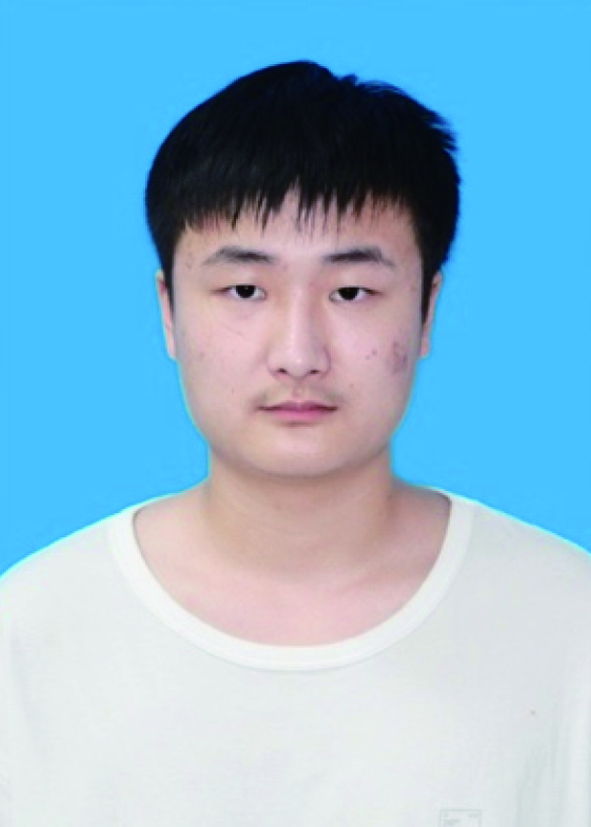 Boyu Ye is now an undergraduate student at the School of Electronics and Information, Hangzhou Dianzi University under the supervision of Dr. Xiao Liu and prof. Liang Chu. His research focuses on synaptic devices for neuromorphic computing.
Boyu Ye is now an undergraduate student at the School of Electronics and Information, Hangzhou Dianzi University under the supervision of Dr. Xiao Liu and prof. Liang Chu. His research focuses on synaptic devices for neuromorphic computing. Xiao Liu got her PhD degree in 2021 at Sorbonne University in France. Then she joined the group of academician Deren Yang and Prof. Xiaodong Pi at Zhejiang University as a postdoctor. In July 2023, she joined Hangzhou Dianzi University as a lecturer. Her research interests include inorganic/organic optoelectronic synaptic devices and their neuromorphic applications.
Xiao Liu got her PhD degree in 2021 at Sorbonne University in France. Then she joined the group of academician Deren Yang and Prof. Xiaodong Pi at Zhejiang University as a postdoctor. In July 2023, she joined Hangzhou Dianzi University as a lecturer. Her research interests include inorganic/organic optoelectronic synaptic devices and their neuromorphic applications. Xiaodong Pi received his PhD degree at the University of Bath in 2004. He then carried out research at McMaster University and the University of Minnesota at Twin Cities. He joined Zhejiang University as an associate professor in 2008. He is now a professor in the State Key Laboratory of Silicon and Advanced Semiconductor Materials, the School of Materials Science and Engineering, and Zhejiang University-Hangzhou Global Scientific and Technological Innovation Center. His research mainly concerns group Ⅳ semiconductor materials and devices.
Xiaodong Pi received his PhD degree at the University of Bath in 2004. He then carried out research at McMaster University and the University of Minnesota at Twin Cities. He joined Zhejiang University as an associate professor in 2008. He is now a professor in the State Key Laboratory of Silicon and Advanced Semiconductor Materials, the School of Materials Science and Engineering, and Zhejiang University-Hangzhou Global Scientific and Technological Innovation Center. His research mainly concerns group Ⅳ semiconductor materials and devices.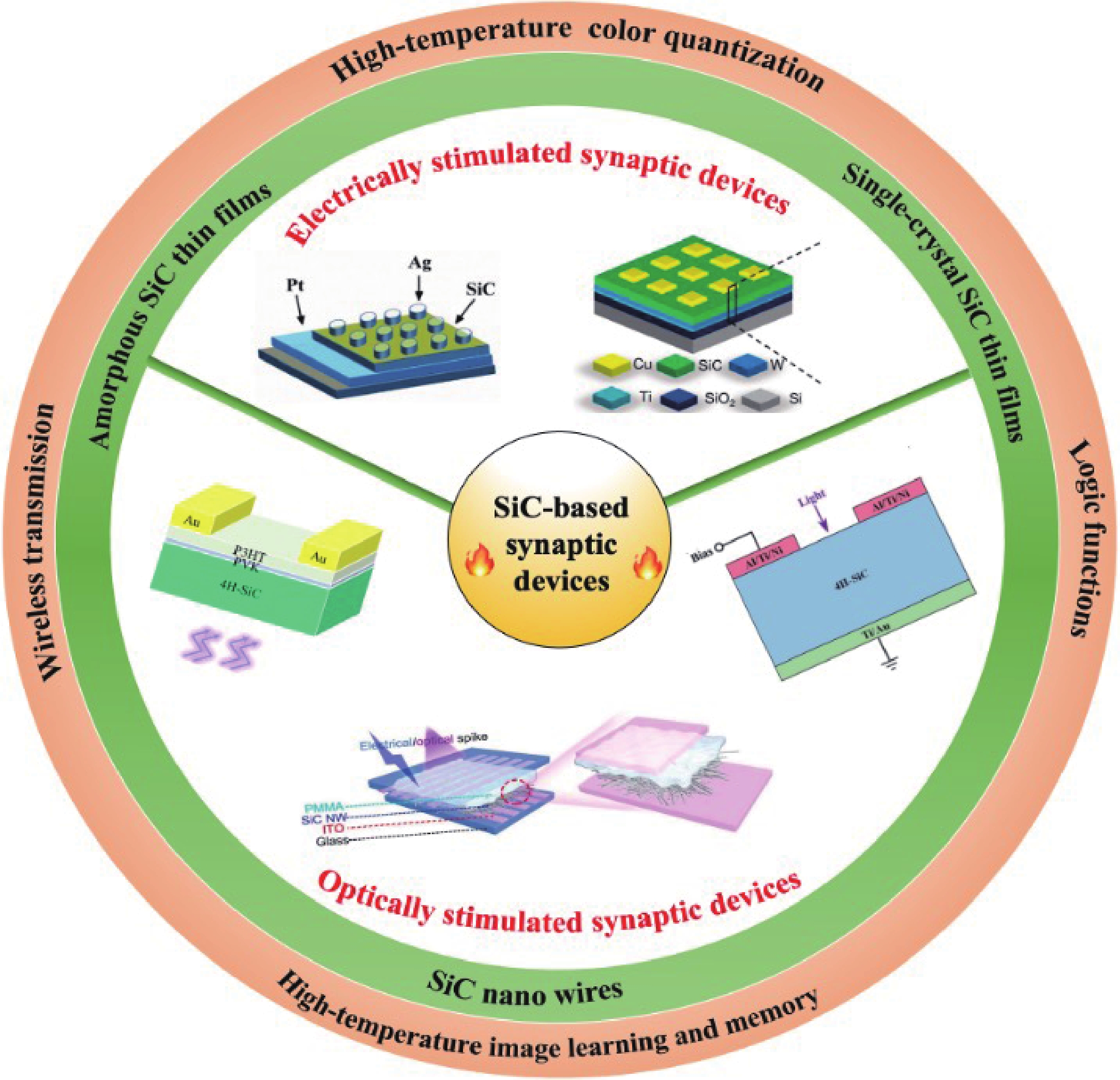
 DownLoad:
DownLoad:
